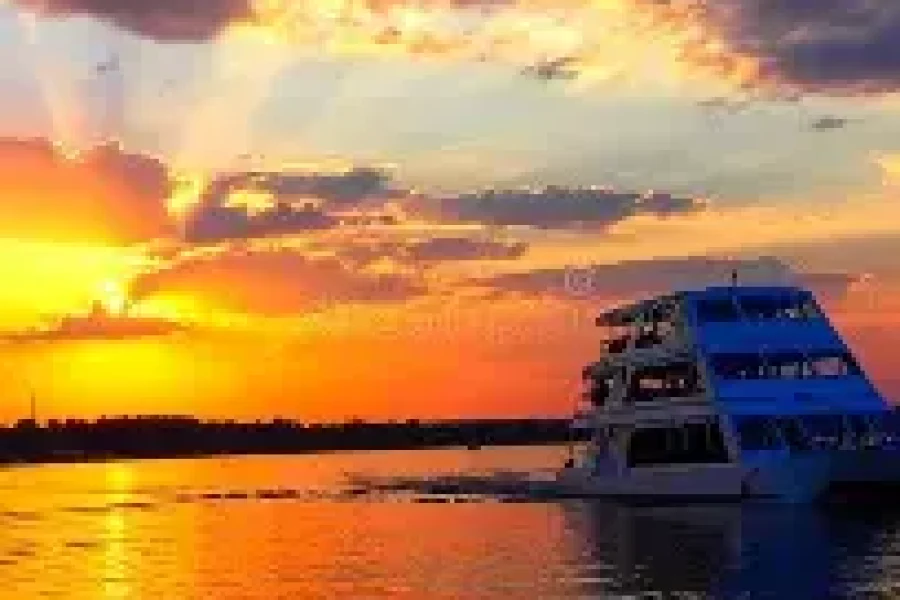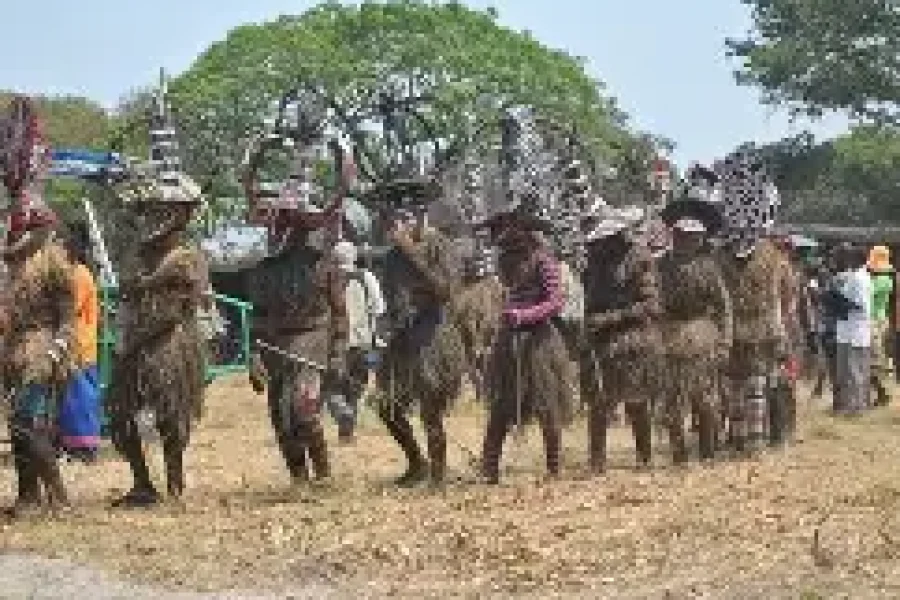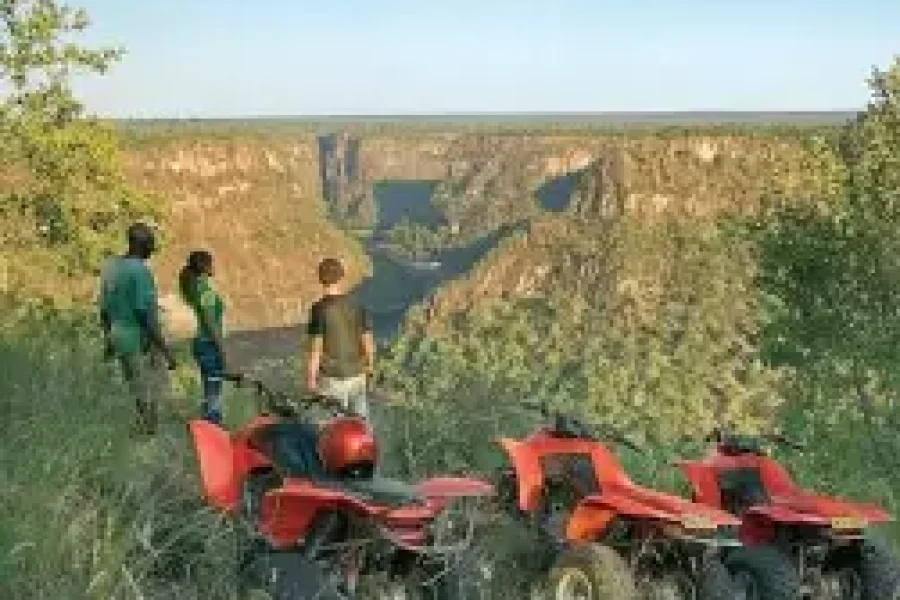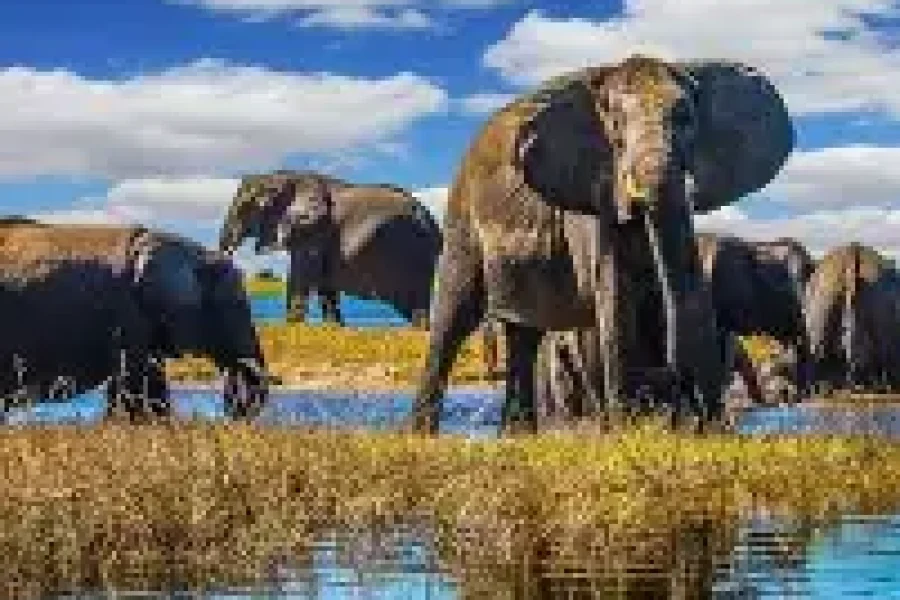Best African Safaris & Travel Services – African Authentic Safaris Ltd
Victoria Falls Zimbabwe Side Tour from Livingstone
from 0 review
Day Trip
Daily Tour
Unlimited
___
Description
Experience the majestic Victoria Falls from its most spectacular vantage point with our Victoria Falls Zimbabwe Side Tour from Livingstone. This cross-border day trip allows visitors staying in Livingstone, Zambia to witness the breathtaking “Smoke that Thunders” from the Zimbabwe side, which offers the most comprehensive views of this natural wonder. Approximately 75% of the falls’ viewpoints are located in Zimbabwe, providing unparalleled panoramic vistas of the main falls. Our expertly guided tour handles all border formalities, transportation, and guided walks, ensuring a seamless experience as you explore one of the Seven Natural Wonders of the World. Ideal for photographers, nature enthusiasts, and travelers seeking the most complete Victoria Falls experience, this day trip perfectly complements your Livingstone stay.
Highlights
- Panoramic views of Victoria Falls from the most complete viewing side
- Expert guided tour of all 16 Zimbabwe-side viewpoints
- Main Falls view – the most impressive and photogenic section
- Devil’s Cataract – witness the origin point of the falls
- Danger Point – experience the raw power up close (seasonal)
- Rainforest walk through the mist-fed ecosystem
- Rainbow viewing opportunities with perfect light angles
- Victoria Falls Bridge viewing and photo opportunity
- Hassle-free border crossing with guide assistance
- Cultural insights into the history and significance of the falls
Detailed itinerary
- Hotel pickup and drop-off from Livingstone accommodations
- All transportation in air-conditioned vehicles
- Professional English-speaking guide with local expertise
- Border crossing assistance
- Zimbabwe National Park entrance fees
- Guided walking tour of all viewpoints
- Rainforest protection poncho (seasonal)
- Bottled water
- Small group experience (maximum 12 travelers)
- Binoculars for enhanced viewing
- Historical and cultural commentary
- Wildlife spotting opportunities
- Photo stops at key vantage points
- Victoria Falls Bridge visit
- Visa fees for Zimbabwe (payable at the border)
- Meals and additional beverages
- Optional helicopter flights (“Flight of Angels”)
- Personal expenses and souvenirs
- Gratuities for guides (recommended but optional)
- Travel insurance
- Professional photography permits (if applicable)
- High-water season raincoats (available for rent)
- Activities not specified in the itinerary
- Overnight accommodation in Livingstone
Tour's Location
Why should I visit the Zimbabwe side of Victoria Falls if I’m staying in Livingstone?
While the Zambian side offers excellent close-up views of Eastern Cataract and Knife Edge Bridge, the Zimbabwe side provides the most comprehensive panoramic experience of Victoria Falls. Approximately 75% of the falls’ frontage is visible from Zimbabwe, including the Main Falls (the most voluminous section) and Devil’s Cataract. The Zimbabwe viewpoints offer the classic, postcard-perfect vistas that most travelers associate with Victoria Falls. Additionally, the Zimbabwe side remains impressive year-round, whereas the Zambian side can become quite dry from October to December when water is diverted to hydroelectric plants. For photography enthusiasts, the Zimbabwe side offers superior angles for capturing the falls’ magnitude and witnessing rainbows forming in the mist. Ideally, experiencing both sides provides the complete Victoria Falls experience.
What documents do I need for crossing from Zambia to Zimbabwe?
For this cross-border day trip, you’ll need a passport valid for at least six months with minimum two blank pages. Most nationalities require a visa to enter Zimbabwe, available at the border crossing (KAZA Univisa is recommended when available as it covers both Zambia and Zimbabwe). The KAZA Univisa costs approximately $50 USD and allows multiple entries between the countries. If not using the KAZA Univisa, a single-entry Zimbabwe visa costs $30-55 USD depending on nationality. Payment must be in cash (USD preferred, in clean, newer bills). Ensure your Zambian visa allows multiple entries if you’re returning to Livingstone afterward. Our guides assist with all border formalities but cannot cover visa costs. Bring proof of yellow fever vaccination if arriving from countries with yellow fever risk.
What’s the best time of year to visit the Zimbabwe side of Victoria Falls?
Victoria Falls experiences dramatic seasonal variations that affect your viewing experience. Peak water flow occurs between February and May after the rainy season, creating spectacular curtains of water and maximum mist. During this period, prepare to get wet despite ponchos, and visibility can be limited by the abundant spray. The Zimbabwe side remains impressive during mid-season (June-August) with balanced water volume and visibility. Low-water season (September-December) offers crystal-clear visibility with less spray, allowing you to see the rock formation and gorge structure, though some sections may be dry. Photography is generally best in June-July when water volumes remain impressive but spray doesn’t overwhelm cameras. For rainbow viewing, morning visits are ideal for the Zimbabwe side due to favorable sun angles.
How wet will I get when visiting Victoria Falls from the Zimbabwe side?
Your likelihood of getting wet depends entirely on the season. During high-water season (February-May), expect a thorough soaking at most viewpoints despite the provided ponchos. The mist creates a perpetual “rain” as water rebounds from the gorge below. Waterproof covers for cameras and phones are essential during these months. Mid-season (June-August) brings manageable spray at select viewpoints, primarily near Danger Point and Main Falls. During low water season (September-December), you’ll likely stay completely dry. The Zimbabwe side generally offers more viewing options that remain dry year-round compared to the Zambian side’s Knife Edge Bridge. We recommend quick-dry clothing, waterproof footwear with good traction, and protective gear for electronics if visiting during high water. Changing facilities are not readily available, so dress accordingly.
How physically demanding is the Victoria Falls Zimbabwe Side tour?
The walking tour along the Zimbabwe side is moderately easy and accessible for most visitors with basic mobility. The pathway stretches approximately 1.5 kilometers (1 mile) with viewpoints distributed along a mostly flat, paved walkway through the rainforest. While there are some steps and slight inclines, the route is generally well-maintained with railings and clear paths. Most visitors complete the walking portion in 1.5-2 hours at a leisurely pace. The tour is suitable for children and older adults who can manage moderate walking. Wheelchair access is limited but possible for parts of the path with assistance. The most challenging aspects are managing the sometimes slippery conditions during high water season and dealing with heat during midday visits. We recommend comfortable walking shoes, sun protection, and bringing water despite our provided bottles.
Will I see wildlife on the Victoria Falls Zimbabwe Side tour?
Wildlife sightings are common but incidental to the falls experience. Within the Victoria Falls National Park on the Zimbabwe side, you’ll frequently encounter warthogs, baboons, vervet monkeys, and bushbuck wandering freely. Birdlife is abundant with species like trumpeter hornbills, herons, fish eagles, and the colorful rock pratincole (in dry season). More rarely, visitors spot monitor lizards and small antelope. The park’s rainforest ecosystem, sustained by constant mist, creates a unique habitat. While impressive, note that baboons and monkeys can be opportunistic – never feed them and keep belongings secure. For dedicated wildlife viewing, we recommend adding Zambezi National Park or a river cruise to your itinerary. Victoria Falls town occasionally has elephants wandering through, especially near riverside accommodations, but these sightings aren’t guaranteed on the day trip.
Can I combine the Zimbabwe tour with other activities on the same day?
While the Victoria Falls Zimbabwe Side Tour occupies approximately 5-6 hours including border crossings, it’s possible to add complementary activities for a fuller day experience. Morning activities in Livingstone like elephant encounters or museum visits can be arranged before an afternoon falls tour. Alternatively, after a morning falls visit, activities like a sunset Zambezi cruise (highly recommended) or local craft market shopping can complete your day. More ambitious travelers occasionally combine both the Zambia and Zimbabwe sides in one day, though this is rushed and not ideal for photography enthusiasts. We don’t recommend attempting high-adrenaline activities like white water rafting or bungee jumping on the same day as they deserve dedicated time. When booking, inform us of your interests, and we can customize the schedule to accommodate additional experiences while ensuring comfortable pacing.
What photography opportunities does the Zimbabwe side offer?
The Zimbabwe side of Victoria Falls offers photography enthusiasts the most comprehensive and iconic shots of this natural wonder. You’ll have opportunities to capture the full breadth of the falls from multiple angles, with Main Falls and Devil’s Cataract being particularly photogenic. Morning visits (8-10 AM) provide optimal lighting with the sun behind you and frequent rainbows forming in the mist. During high water season, protecting equipment from spray becomes challenging but creates dramatic misty shots. Low water season allows clear views of the gorge structure and falls’ precipice. Wide-angle lenses (16-35mm) capture the falls’ breadth, while telephoto lenses highlight details across the gorge. For serious photographers, we recommend bringing polarizing filters to manage reflections, microfiber cloths for lens cleaning, and waterproof covers during high water season. Tripods are permitted but cumbersome on crowded viewpoints.
What’s included in the Zimbabwe National Park entrance fee?
The Victoria Falls National Park entrance fee on the Zimbabwe side (included in your tour price) covers access to all 16 official viewpoints along the 1.5km walking path through the rainforest. These viewpoints offer progressively different angles of the falls, from the origin at Devil’s Cataract to the eastern edge where Zimbabwe meets Zambia. The fee includes maintenance of the well-developed walkways, viewing platforms, and rainforest protection. It also contributes to conservation efforts within the UNESCO World Heritage Site, including efforts to control invasive species and protect the unique rainforest ecosystem. Guides are not included in the standard park fee but are provided as part of our tour package. The park entrance allows one-time access for the day (re-entry requires additional payment), so our itinerary ensures you have sufficient time to experience all viewpoints without rushing.
How does the Victoria Falls Zimbabwe Side compare to the Zambia side?
The Zimbabwe and Zambia sides offer complementary rather than competing experiences of Victoria Falls. Zimbabwe provides the panoramic, frontal views that appear in most postcards, with approximately 75% of the falls visible along its viewing path. These viewpoints offer the best appreciation of the falls’ scale and majesty from a slight distance. The Zambia side, conversely, offers more immersive, close-up experiences, particularly at the Knife Edge Bridge where visitors can feel the falls’ power directly beside and sometimes above them. During low water season (October-December), the Zambian side can become completely dry while Zimbabwe’s Main Falls still flow impressively. Zambia offers additional activities like Devil’s Pool (seasonal) and Livingstone Island tours not available from Zimbabwe. Ideally, experiencing both sides provides the complete Victoria Falls experience – the impressive overview from Zimbabwe and the intimate encounter from Zambia.





Leave a review